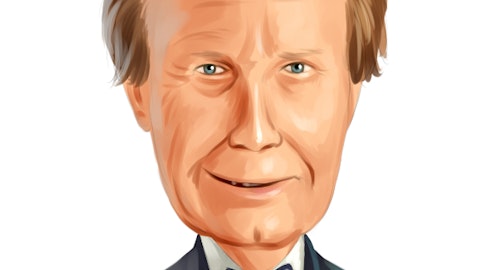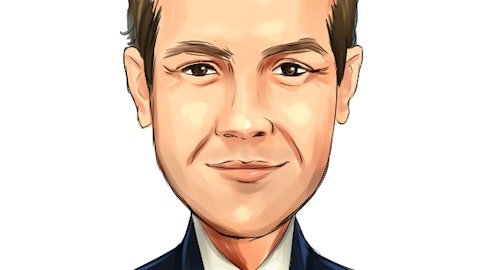Steel City Capital recently released its Q2 2020 Investor Letter, a copy of which you can download here. During the second quarter of 2020, the fund returned 13.1% net of fees, while the S&P 500 Index was up 20.0%. You should check out Steel City Capital’s top 5 stock picks for investors to buy right now, which could be the biggest winners of the stock market crash.
In the said letter, Steel City Capital highlighted a few stocks and Trupanion Inc. (NASDAQ:TRUP) is one of them. Trupanion Inc. (NASDAQ:TRUP) is a pet insurance company. Year-to-date, Trupanion Inc. (NASDAQ:TRUP) stock gained 34.4% and on July 20th it had a closing price of $49.93. Here is what Steel City Capital said:
“Trupanion (TRUP). The Partnership is short shares of TRUP on account of what I believe to be both a flawed business model and an unjustifiably high valuation due to unrealistic expectations for future profitability. Business model shortcomings include:
- A distribution model that primarily sells insurance coverage through the veterinary channel which likely leads to adverse selection in its risk pool (pet owners that purchase policies at the vet are more likely to have pets that are sick and therefore require future care);
- Above-average pricing, potentially owing to a rate-spiral caused by the adverse selection problem highlighted above;
- Increasing competition from the likes of Pumpkin, Nationwide, and Lemonade; and
- Rapidly growing policyholder acquisition costs (potentially a function of increasing competition).
In addition to these issues, the company is potentially engaged in questionable accounting as it relates to its relationship with an undisclosed variable interest entity (VIE). Trupanion has invested $7.0 million in the entity via a preferred stock purchase; extended another $2.5 million to the entity via a revolving line of credit that has been fully drawn; provides “ancillary services” to the entity “at cost” and records funds received for those services as an offset to its own operating expenses2 ; and has the option to purchase all of the outstanding common shares issued by the VIE on the fifth anniversary of its initial preferred stock purchase. Details surrounding the VIE’s activities are scarce, but research has uncovered relationships to a number of entities including Rayne Nutrition Inc., Landspath, and Blue Heron Consulting whose activities appear to be intertwined with TRUP’s.
Despite no track record of generating GAAP profits or free cash flow, the company trades at 12.7 P/B and 331x my estimate of FY’20 GAAP earnings. How is this possible? For starters, management has deftly marketed TRUP to investors not as a standard insurance company, but instead as a SaaS-like business. Investor communications bear no reference to metrics like combined ratio, number of policyholders, or return on equity, but instead highlight things like Average Revenue Per Pet, Subscribers, Retention, Lifetime Value and Internal Rate of Return. Additionally, management – and specifically the company’s CEO Darryl Rawlings – has carefully cultivated a folksy image, drawing heavily on quips and quotes from Warren Buffett, despite simultaneously ignoring “The Oracle of Omaha” when his teachings depart from the company’s narrative (more on this below). My view is more simplistic: if it walks like a duck and talks like a duck, then it is a duck. Or perhaps more appropriately in the case of Trupanion: you can put lipstick on a pig, but it’s still a pig. Trupanion is an insurance company – full stop.
Price vs. Value
In finance, the purest way to calculate a company’s value is via a discounted cash flow (DCF) model. Rawlings agrees. In his 2019 Letter to Shareholders, he says the following:
“We believe all companies should be valued on future free cash flows. To accomplish this task, one needs to build a DCF model. When an informed investor builds such a model for Trupanion, we believe they will better understand how and why our business is differentiated. Absent this exercise, one is only speculating as to how best to value a company.
There is no such thing as the perfect DCF model, but I am confident that when it comes to our business, our interpretation is well thought out and defensible.”
Rawlings proceeds to lay out a multi-page DCF model that – surprise, surprise – results in a price slightly above where shares were then trading. Let’s have a look at how “defensible” the company’s DCF is and what the market is today implying in its assessment of TRUP.
As any junior investment banking analyst will tell you, the concept of “garbage in, garbage out” is a key shortcoming of DCF models. Below is an overview of what I believe are some of the “garbage” assumptions included in TRUP’s DCF model. Collectively they have the effect of ascribing more value to the company than I believe is justified.
- Subscription Pet Revenue is assumed to grow at a CAGR of 18.4% through 2033, underpinned by a 12.2% CAGR in average subscription pets and continued increases in average monthly premiums of 5.5% over the explicit forecast period. In the real world, the rate of growth in average subscription pets has drifted lower over time, coming in at 14.7% and 14.2% during the most recent two quarters. One must ask – how likely is it that the company doesn’t shoot through 12.2% on the downside? Are low-teens rates really sustainable for a decade and a half? Similarly, considering that TRUP charges, on average, some of the highest premiums against an increasingly competitive backdrop, how likely is it that the company is able to maintain price increases at a rate of 5.5% per year?
- The growth rate of Pet Acquisition Costs is forecast to decelerate substantially from its multi-year rate north of 20% to ~10% in 2021 and mid-single digits by 2023. Management chalks this up to its no-cost refer-afriend and add-a-pet channels eventually constituting approximately half of its gross adds. This compares to less than 1% today. If it’s possible to add additional subscribers at no-cost, why isn’t the company doing it today in any meaningful way? For a company obsessed with internal rate of return, this is a surefire way to enhance this metric. Not doing so is capital allocation malpractice. And if TRUP’s value proposition is so compelling, why don’t policyholders with more than one pet already have all of their pets covered?
- The company’s model is based on cash generation, excluding stock-based compensation. As any Buffettacolyte like Rawlings should know, The Oracle is adamant in his belief that stock-based compensation is a true expense5 . Rawlings tries to skirt around this issue by calculating per share value using the current period diluted share count. This approach is flawed because nowhere does the model account for the dilution that will occur in future years due to ongoing share issuances. This is particularly important in the case of TRUP which leans more heavily on non-cash compensation than its peers6 . From a methodological perspective, the cost of future option grants should be incorporated into the DCF model otherwise value will be overstated.
- More sacrilege! Rawlings conveniently sidesteps any discussion of depreciation and capital expenditures. Doesn’t he know what Buffett thinks about that? “Every dime of depreciation expense we report, however, is a real cost. And that’s true at almost all other companies as well.7” From a methodological perspective, the DCF should make an explicit forecast of capital expenditures.
TRUP’s shares closed at $49.45 on July 17th. This is approximately 40% above the $35 value implied by the company’s DCF. What does this mean for investors? If you think management can hit its lofty targets over the next 14 years before settling into a perpetual growth rate of 5.0%, then shares are worth $35 at best. For today’s price of ~$50 to accurately represent value, you have to believe the company can generate revenue growth above 18.4% per annum for the next 14 years, achieve additional margin expansion, or some combination of the two. But if one believes, as I do, that the company’s DCF leans on aggressive assumptions and a flawed methodology that tilts value in its favor, then TRUP’s shares are worth substantially less than $35, setting up an attractive risk-reward on the short side from today’s levels. In the short run, the market is a voting machine but in the long run, it is a weighing machine.”

Pixabay/Public Domain
In Q1 2020, the number of bullish hedge fund positions on Trupanion Inc. (NASDAQ:TRUP) stock remained unchanged from the previous quarter (see the chart here). Our calculations showed that Trupanion Inc. (NASDAQ:TRUP) isn’t ranked among the 30 most popular stocks among hedge funds.
The top 10 stocks among hedge funds returned 185% since the end of 2014 and outperformed the S&P 500 Index ETFs by more than 109 percentage points. We know it sounds unbelievable. You have been dismissing our articles about top hedge fund stocks mostly because you were fed biased information by other media outlets about hedge funds’ poor performance. You could have doubled the size of your nest egg by investing in the top hedge fund stocks instead of dumb S&P 500 ETFs. Below you can watch our video about the top 5 hedge fund stocks right now. All of these stocks had positive returns in 2020.
Video: Top 5 Stocks Among Hedge Funds
At Insider Monkey we scour multiple sources to uncover the next great investment idea. For example, legal marijuana is one of the fastest growing industries right now, so we are checking out stock pitches like “the Starbucks of cannabis” to identify the next tenbagger. We go through lists like the 10 most profitable companies in the world to pick the best large-cap stocks to buy. Even though we recommend positions in only a tiny fraction of the companies we analyze, we check out as many stocks as we can. We read hedge fund investor letters and listen to stock pitches at hedge fund conferences. Hedge fund sentiment towards Tesla reached its all time high at the end of 2019 and Tesla shares more than tripled this year. We are trying to identify other EV revolution winners, so if you have any good ideas send us an email. You can subscribe to our free enewsletter below to receive our stories in your inbox:
Disclosure: None. This article is originally published at Insider Monkey.





